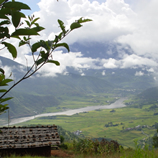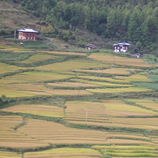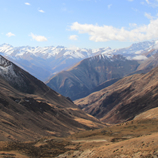


Bhutan is a small, landlocked nation nestled in the Himalayas that is known as a biodiversity hotspot for global travelers. With its diverse topography ranging from subtropical lowlands to glorious peaks reaching 7,541 meters, the country offers an extraordinary richness of both plant and animal life. The forests cover over 72% of Bhutan, which is a testament to the country's commitment to environmental preservation. These forests are the lifeblood of Bhutan's biodiversity, providing habitat and sustenance for a vast spectrum of species.
Flora and Fauna
Bhutan's unique environment supports an impressive variety of life:
- Over 5,000 plant species, including hundreds of orchids and rhododendrons.
- A paradise for bird and nature lovers, with over 770 species recorded.
- Home to the iconic and vulnerable black-necked crane and other endangered species.
- More than 165 species of mammals, including elusive snow leopards and golden langurs.
- Tigers, typically found in tropical climates, thriving at high elevations in Bhutan.
Rivers and Climate
Bhutan's rugged terrain is carved by major rivers that originate in the mighty Himalayas. These waterways are not only crucial for the environment but also have deep significance to Bhutanese culture and livelihoods.
The climate of Bhutan varies with altitude, ranging from subtropical conditions in the south to harsh alpine environments in the high mountains. This climatic diversity is reflected in the vegetation:
- Subtropical forests in the lowlands.
- Temperate woodlands at mid-altitudes.
- Alpine meadows in the high mountains.
National Symbols
Bhutan's national flower, the blue poppy, is a symbol of the country's unique flora, thriving in the rocky terrain of northern Bhutan. The Takin, a distinctive and rare animal, is considered the national animal of Bhutan.
Commitment to Conservation
Bhutan prioritizes the preservation of its exceptional wildlife, setting it apart from neighboring nations. With its vast protected forests and commitment to sustainability, Bhutan remains a sanctuary for nature and wildlife conservation.